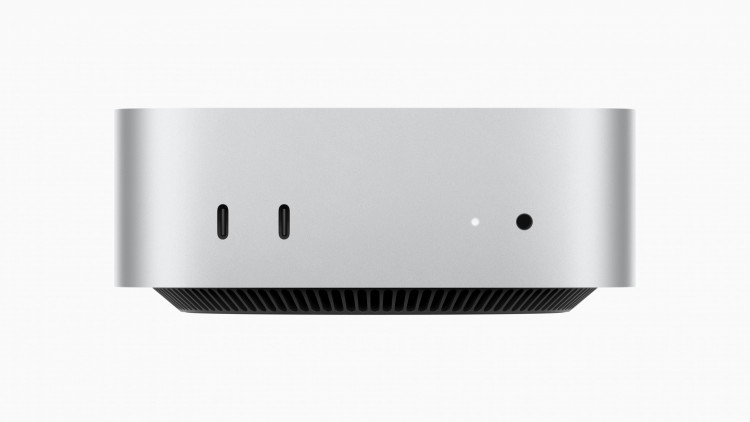Apple has introduced a redesigned Mac Mini equipped with the company's latest M4 chip, marking the first major overhaul of the desktop since 2010. As part of a week filled with Mac-related announcements, the tech giant revealed the significantly smaller and more powerful Mac Mini, which now boasts impressive new features, including ray tracing and enhanced performance, all while maintaining a starting price of $599. Preorders for the new Mac Mini are now available, with the product expected to reach stores by November 8.
The most striking aspect of the redesign is the size reduction. Apple has shrunk the Mac Mini's dimensions to just five inches in length and width, making it one of the smallest desktop computers in its class. Despite its diminutive form, Apple ensures that the system runs efficiently, thanks to the M4's advanced thermal architecture. As Apple explains, this architecture directs air strategically across different parts of the system, while venting occurs through the machine's foot.
The M4 Mac Mini is available in two configurations: the base M4 model, which starts at $599, and the more powerful M4 Pro version, starting at $1,399. Both models come with 16GB of RAM as the new default, but users can upgrade to 32GB or 64GB of RAM for enhanced performance. Storage capacity tops out at 8TB, providing significant power in a compact design. For those requiring faster internet speeds, a 10-gigabit ethernet option remains available as an upgrade.
Apple has also improved the machine's connectivity. The front panel of the new Mac Mini includes two USB-C ports and a 3.5mm audio jack, while the rear features an array of ports, including ethernet, HDMI, and three USB-C/Thunderbolt ports. Notably, Apple has done away with the traditional USB-A ports, a decision reflecting the tech giant's push toward more modern connectivity standards. The base M4 model includes Thunderbolt 4 ports, while the M4 Pro features Thunderbolt 5, allowing for faster data transfers and better performance for prosumers and creative professionals.
The M4 Pro's increased power comes from its 14 CPU cores and 20 GPU cores, a substantial upgrade from the previous generation. This power boost will likely appeal to creatives and developers who rely on Apple's ecosystem for work involving graphics, app development, and other processor-heavy tasks. The inclusion of ray tracing capabilities further enhances the Mac Mini's appeal to gamers and those working with high-end graphics applications.
While the Mac Mini is not Apple's highest-selling product, it plays a crucial role in the company's lineup. The compact desktop is especially popular among developers who use it as a personal development server for coordinating app uploads and managing code for Apple platforms such as iPhone and iPad. As more businesses and individuals turn to Apple products for app development, the Mac Mini's enhanced capabilities are likely to solidify its position in the market.
Apple has framed the new Mac Mini, along with other recently launched devices, as part of the company's broader strategy to integrate its Apple Intelligence system. Announced earlier this week, Apple Intelligence brings AI capabilities, including text generation and ChatGPT integration, to the Mac lineup. While the AI features are limited to newer iPhones, all Macs with an M1 chip or later will support these AI tools, offering users a seamless and intuitive experience across devices.
The new Mac Mini arrives at a time when Apple's Mac business remains a critical segment of the company, even if it is not as dominant as the iPhone. In the June quarter, Apple reported $7 billion in Mac sales, marking a modest 2% increase from the previous year. With the introduction of the new Mac Mini and the recent launch of a refreshed iMac, Apple is poised to maintain its foothold in the desktop computer market.






